Coragyps atratus: The mountain watchers
Living in the mountains near the forest area gives you the opportunity to appreciate a curious variety of flora and fauna. Every time I hike to the top of the mountain, the overflight of birds can be seen in the intense blue of the sky. However, it is not necessary to go into the interior of the mountain to get a close-up view of these watchers of the mountains. They are the masters of the heights, and they always show it with their majestic flights.
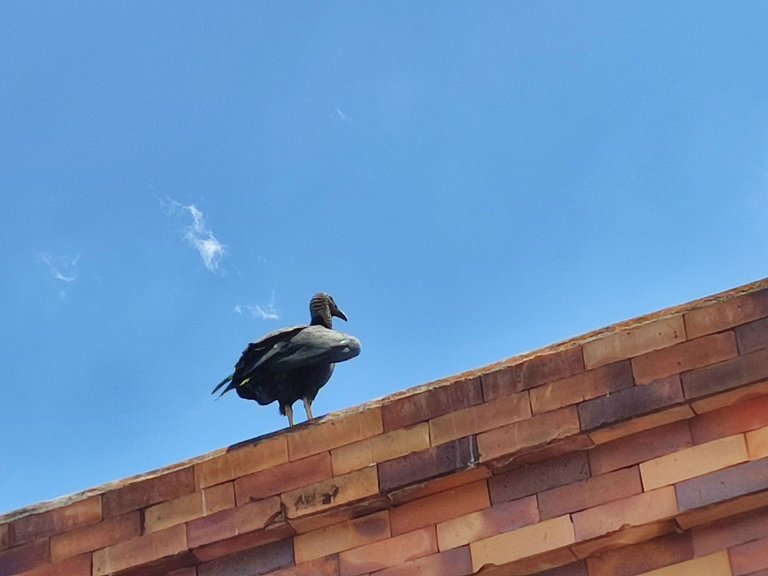

The specie of Coragyps atratus is widely distributed throughout the American continent from the United States to southern Argentina. They can glide long distances. It is known as the American vulture, but colloquially this bird is given several names depending on the region where it is sighted. In Mexico and Central America, it is known as "zopilote", in Argentina "jote de cabeza negra", in Venezuela, it is called "zamuro" and "gallinazo" in Colombia and Peru. It belongs to the order Cathartiformes and the family Cathartidae.
They are birds with black plumage, they can measure up to two meters with their wings extended, and weigh up to 3 kg. They can be seen in groups flying in mountainous areas with sparse forests. They usually form colonies.
They feed on carrion and some species of spiders, rodents, smaller birds, and reptiles. Their beak and claws exert so much force on their prey that they can leave marks on the skeletal remains of their prey.
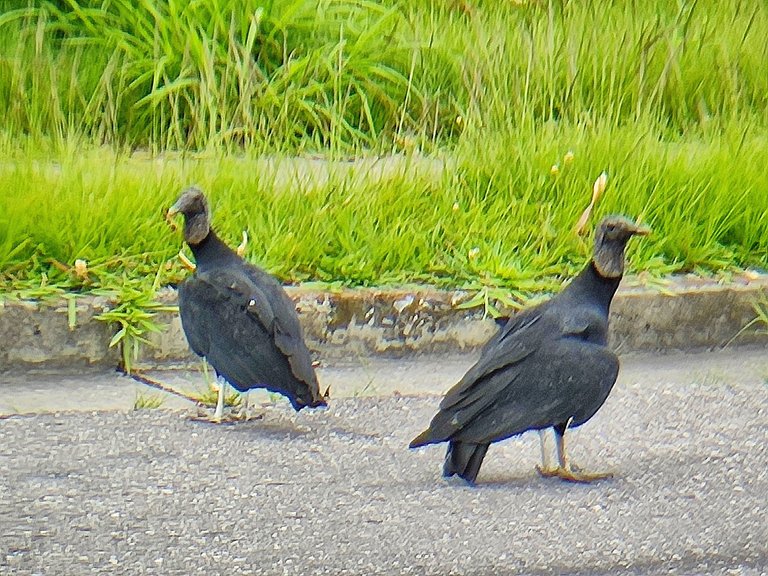
These birds are anatomically designed in an intelligent way to survive. They have featherless caps on their head, which makes it difficult for bacteria and fungi from the carrion they eat to nest there. It also has a thermoregulatory function. They have a highly developed olfactory system that allows them to perceive over several kilometers the aromas of decomposed meat (cadaverine) but their olfactory cells are so sensitive that they detect the exact concentration of sulfuric acid when prey can be consumed or when it should be rejected because the concentration of this compound is high and can be toxic and deadly. Incredible, isn't it? According to this, we can understand that not all carrion is eaten. These birds are selective in their diet.
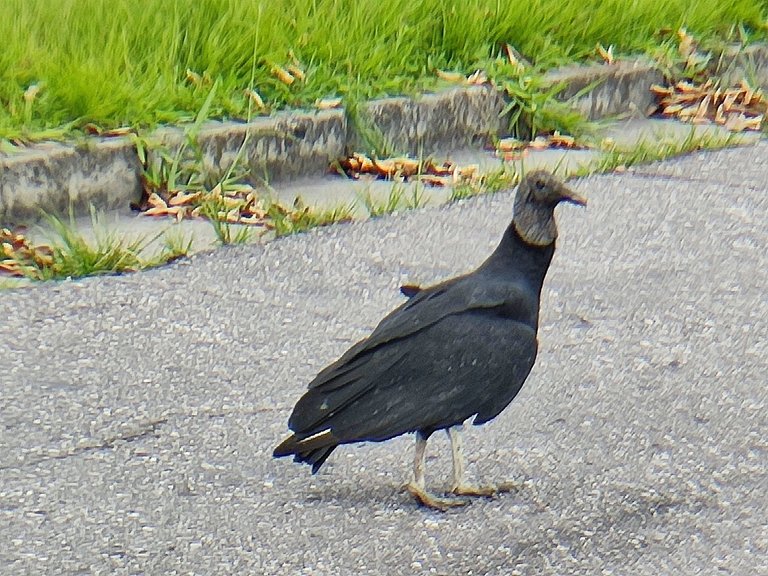


These birds may approach areas inhabited by humans to feed on leftovers, and shelter from rain and heat.
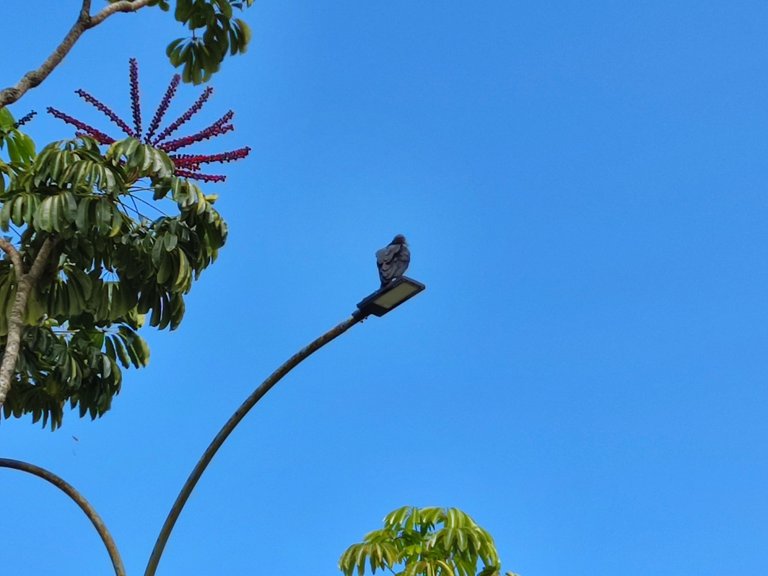
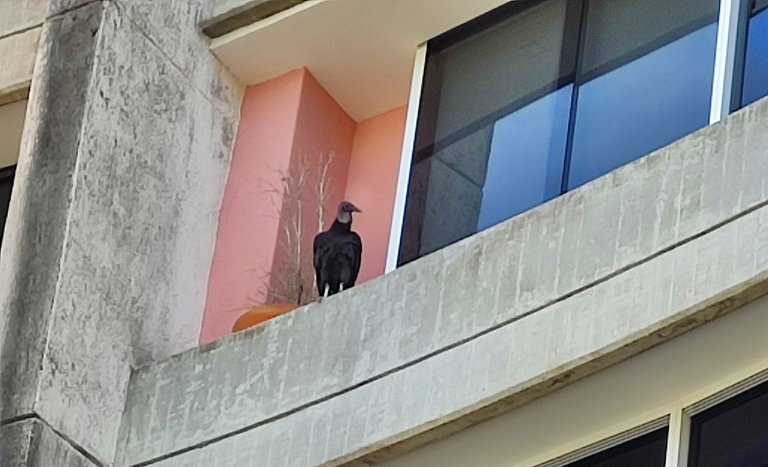
Coragyps atratus, being carrion-eating birds, it is recommended not to get too close because their plumage is abundant in bacteria and fungi that can be pathogenic for humans. For this reason, it is advisable to stay away when these birds fly overhead or flap their wings. Some studies have shown that these birds are carriers of toxoplasmosis and mycoplasmosis.
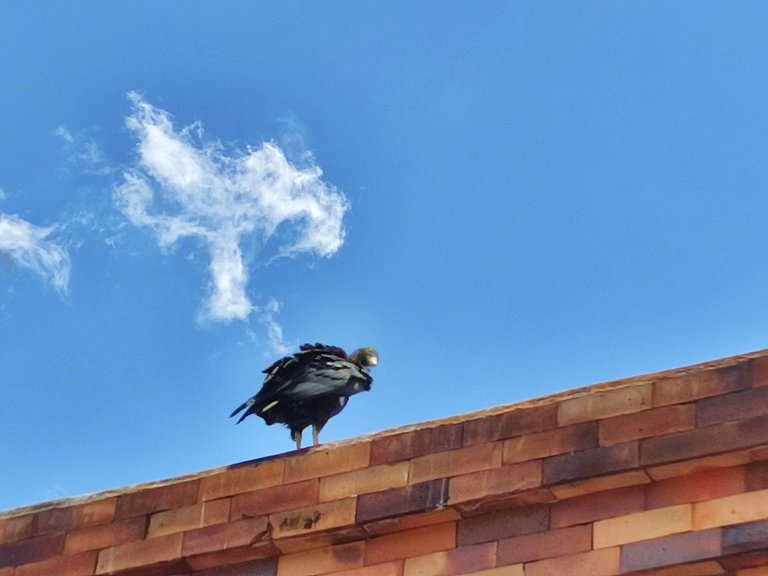
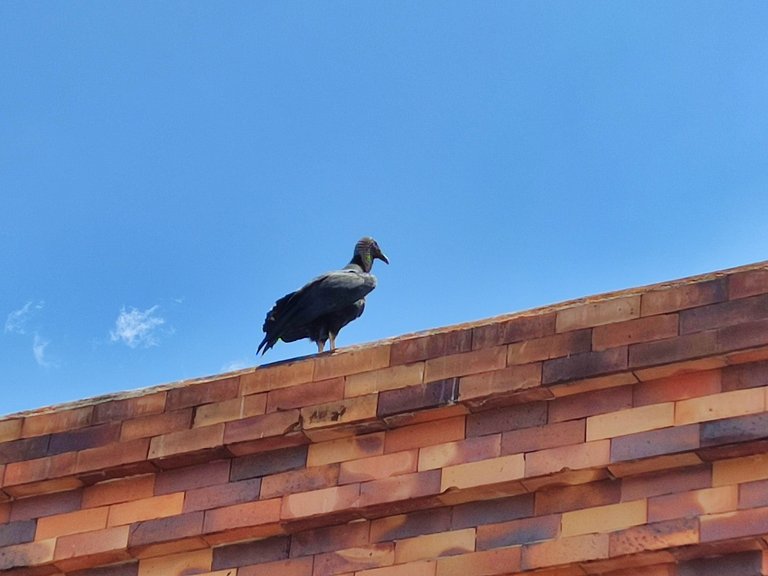
However, these scavengers, like others, are of vital importance in the food chain and ecological balance since they degrade the organic matter of animals into very small pieces that facilitate its degradation by microorganisms and fungi, providing the soil with the necessary nutrients (nitrogen, sodium, potassium, sulfur, calcium, phosphorus, magnesium) for the growth and renewal of the vegetative mantle.
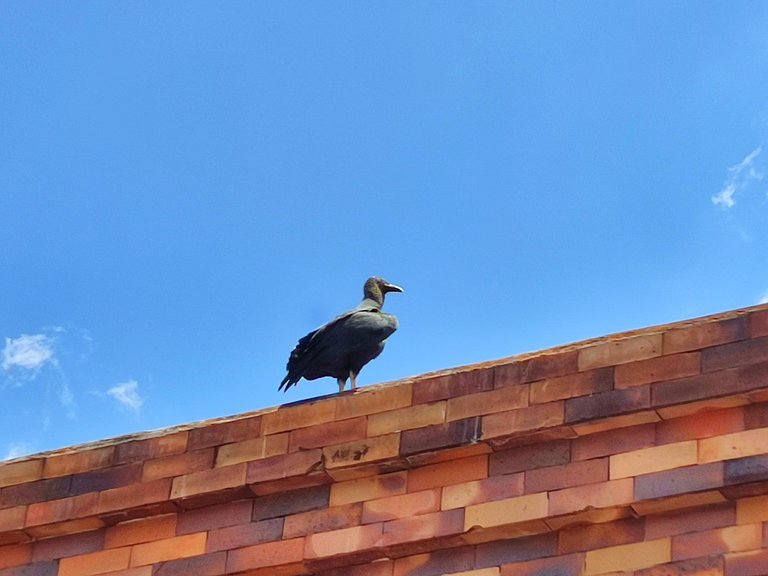

These birds can be seen flying in solitary or in groups moving in circular form. This type of displacement is favored by ascending air currents, and according to popular wisdom, when these birds fly in circular form with a cloudy sky, it is an announcement that it will soon rain.


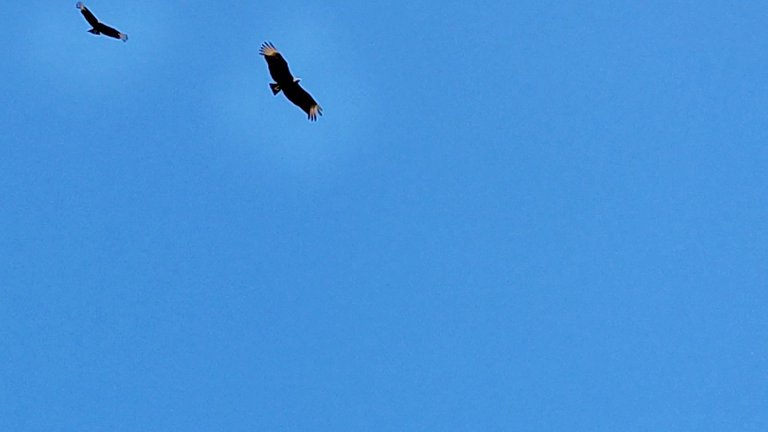
Its broad wings allow it to glide through the sky without expending much energy. It is also a way of locating food. If you carefully observe the flight of the Coragyps atratus, you will be able to distinguish a strip of white feathers on the front of its wings which makes a wonderful contrast with the rest of its ebony black plumage and the intense blue sky.
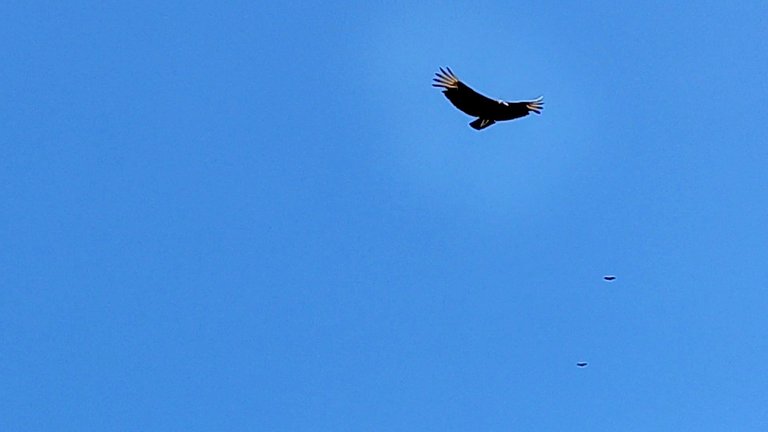
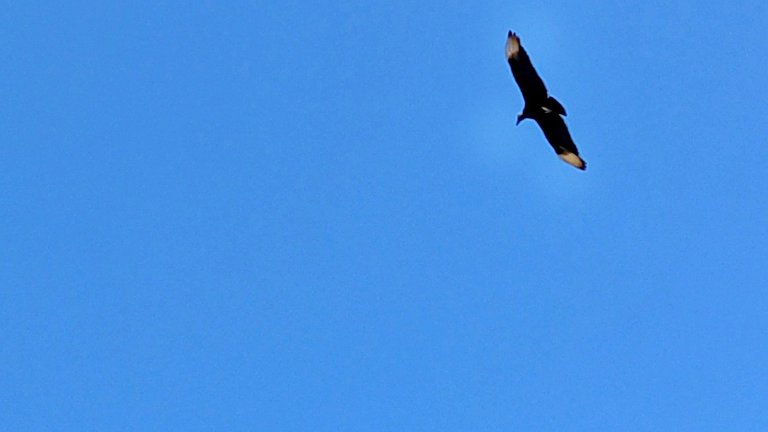
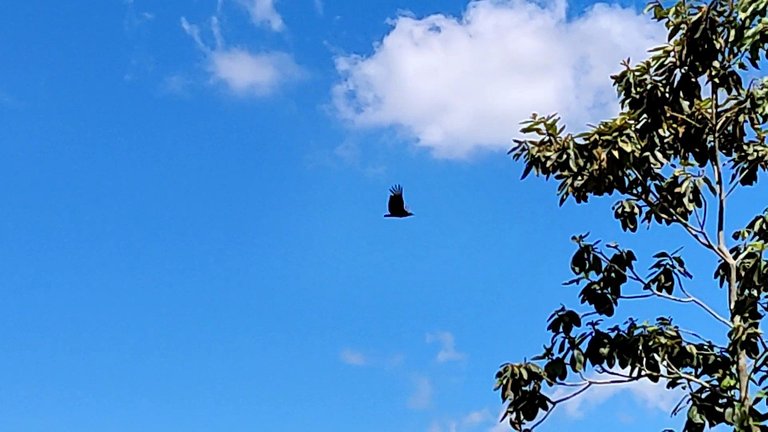
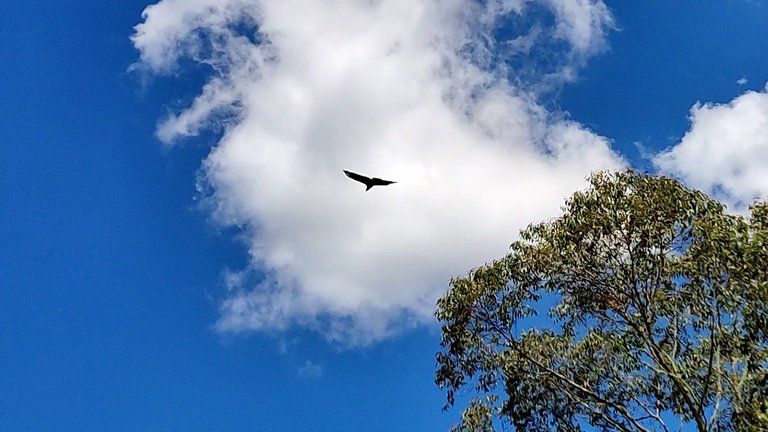
Watching these birds in full flight is hypnotic. The sensation of freedom they transmit is wonderful.
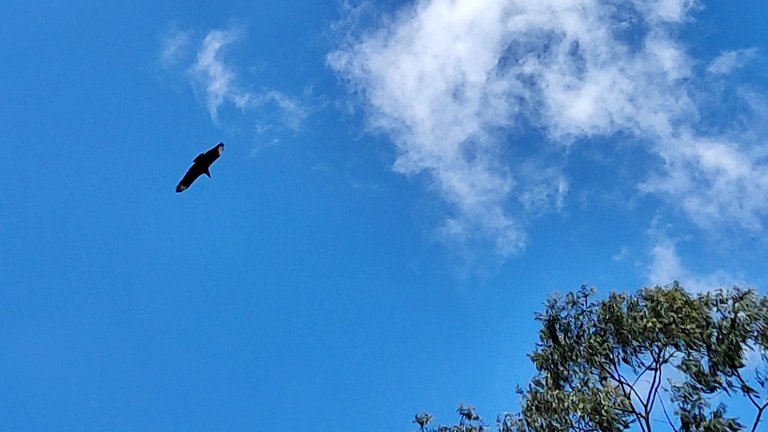
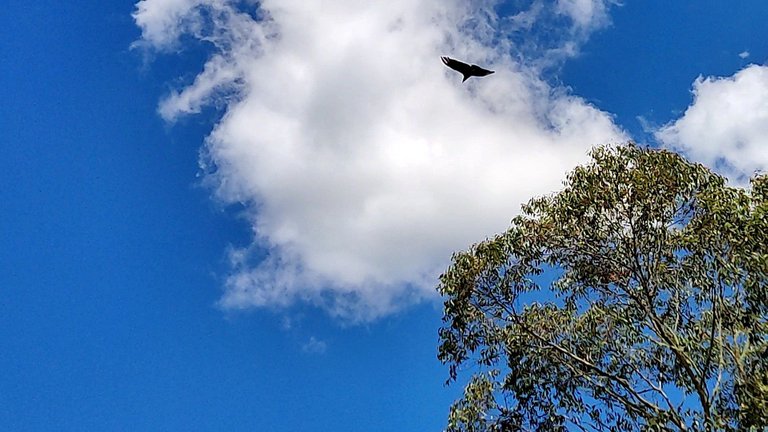
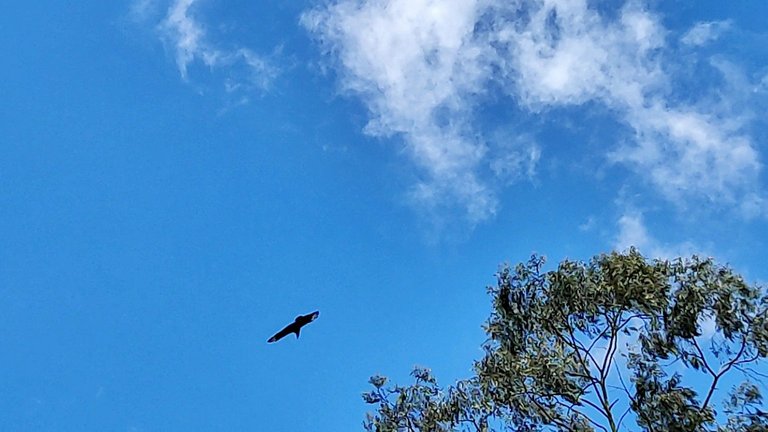
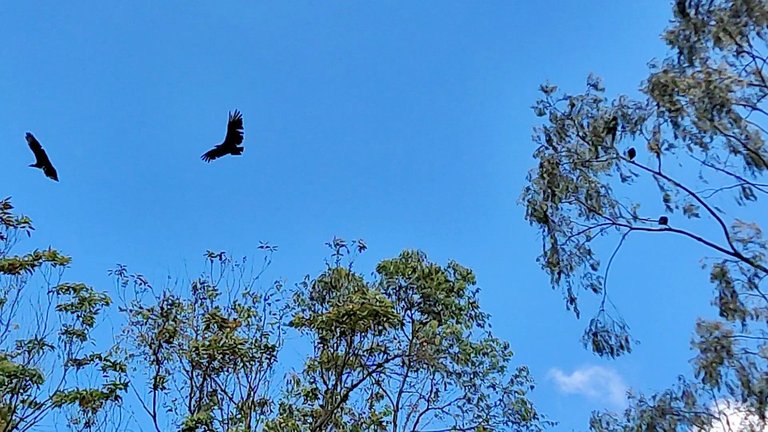
However, they always perch on tree branches to rest for a while.
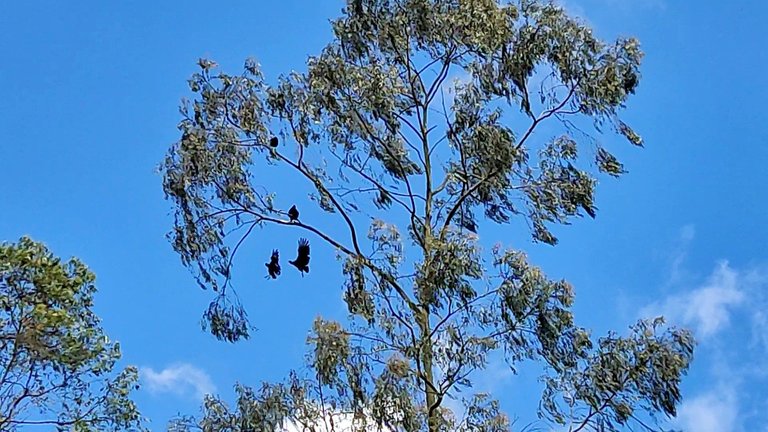
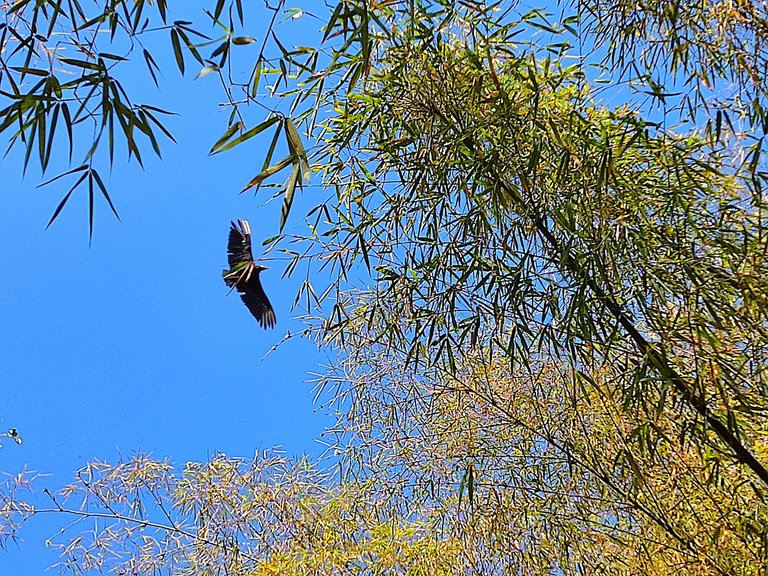
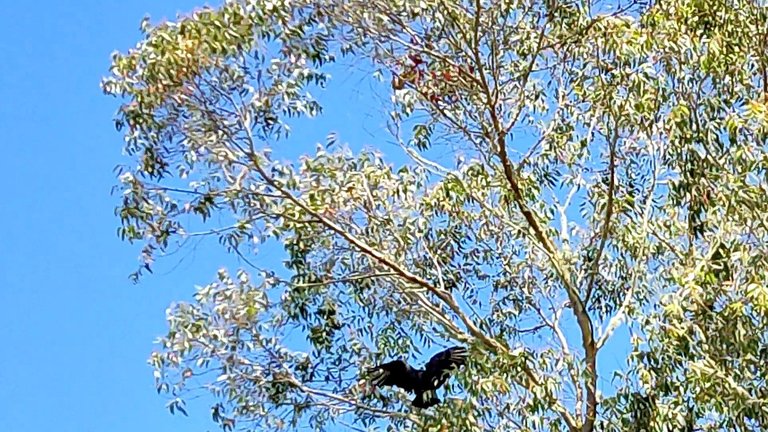
One way to refresh themselves is to spread their wings for long periods, especially on very sunny days. It is truly a spectacle to see these birds in their natural habitat.
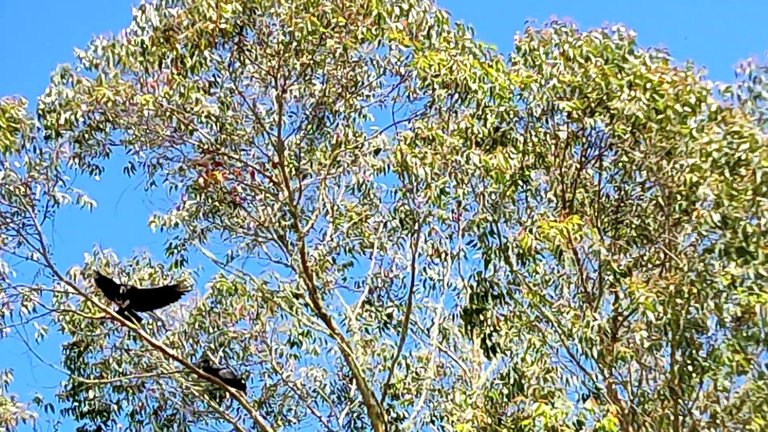
Whenever I walk through the forest, I am very attentive to their flight, but there are some that perch on the highest roofs of the houses like guardians of the mountain.
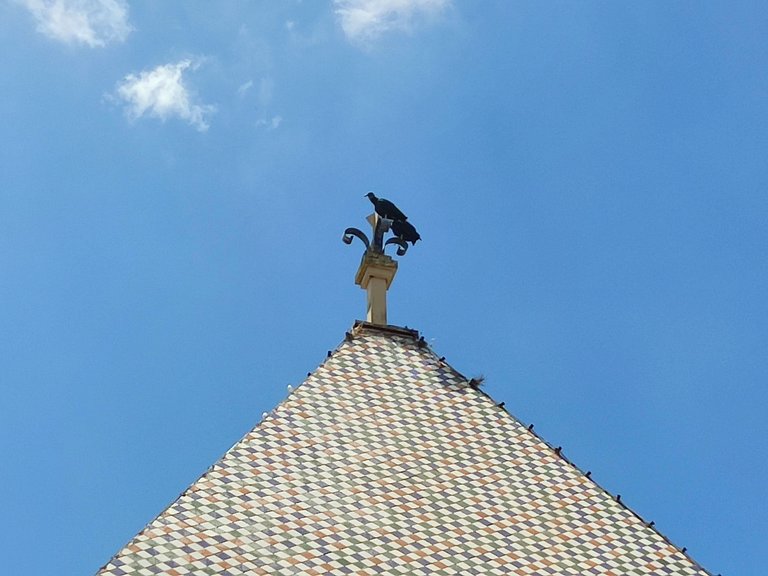

All images are property of the author
(Camera cell phone: POCO X3 Pro, Xiaomi)

Reference:

Muy buena descripción sobre este tipo de ave, suelo verlos prácticamente a diario volando por diferentes rincones de mi ciudad jajaja. Te comento que cuando vi la foto inicial no me había percatado de que era un "zamuro", entonces ya estaba pensando en preguntarte como se vería en un plato esa ave jajajaja, pero ya al ver las otras fotos y el texto mi mente hizo cambio de planes jajajaja. Aunque por allí he visto a personas que se los comen, pero ya son cosas de ellos jajaja. Un gusto leerte, aunque esperaba un platillo súper especial de esos que haces y que alborotan a mi estómago jaja, un abrazoo!
Jajaja no te creas a simple vista se parecen mucho a los pavos domésticos. Te cuento que mi familia paterna criaba este tipo de pavos para el consumo, cuando nacían nos regalaban algunos pavitos para alimentarlos para un evento a futuro, es decir ya sabíamos que lo comeríamos (qué crueldad jejeje) en un cumpleaños o primera comunión 🤣🤣 así que no estabas muy equivocado con tu primera percepción...aunque los zamuros al ser silvestres y alimentarse de tantas cosas pues consumir su carne es riesgoso...aunque te tengo varias historias de eso.
Mil gracias por pasar por aquí mi querido @abneagro, te mando un gran abrazo y un rico plato de pavo horneado ya que pronto será thanksgiving.
Thanks for your contribution to the STEMsocial community. Feel free to join us on discord to get to know the rest of us!
Please consider delegating to the @stemsocial account (85% of the curation rewards are returned).
You may also include @stemsocial as a beneficiary of the rewards of this post to get a stronger support.
Thank you very much for your support, I am honored.
This wonderful and extraordinary bird was very interesting for me. In fact, I can't believe that they have so much power. The American vulture, which of course you said, has local names, because of the carcasses of the animals and their wings not being cleaned so that they can carry all kinds of bacteria and microbes. I am glad that friends and artists are here, each of them collects information for us in any field and introduces us to nature in more detail.
Thank you very much for your comment, I'm glad you liked the information I shared. Thank you very much for stopping by.
We appreciate your work and your post has been manually curated by zoology team (oscurity,nelinoeva) on behalf of Amazing Nature Community. Keep up the good work!
es el animal con el jugo gastrico mas poderoso del planeta! los cientificos creen que puede derretir hierro! sabias que no tienen pluma en su cabeza debido que comen carne podrida si se ensucian alli como se limpiarian? son animales fantasticos!!!
Hola sí, son animales diseñados para sobrevivir a condiciones extremas tanto para alimentarse como para no gastar calorías cuando les toca buscar sus presas, Muchas gracias por su visita.
nice information i love
We appreciate your work and your post was manually curated by @none! from the DNA team!
Reach us on Discord to learn more about the project!
Thank you for your support!